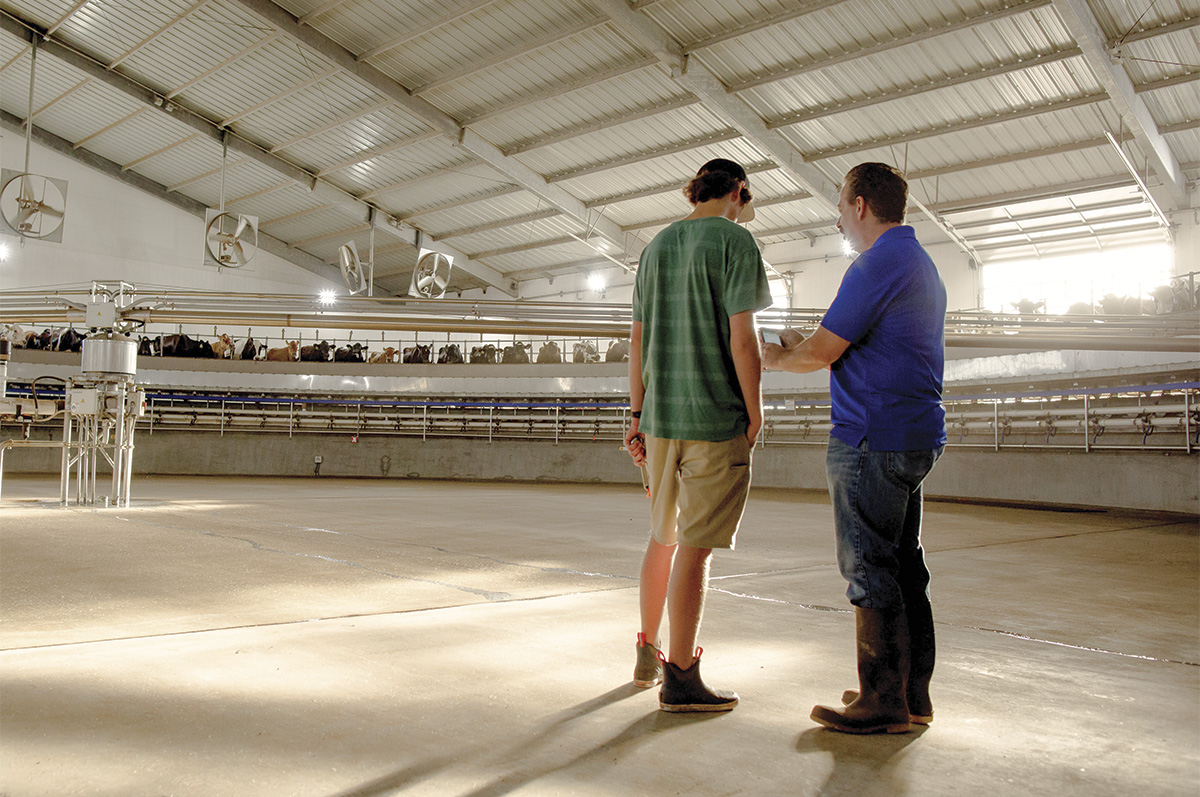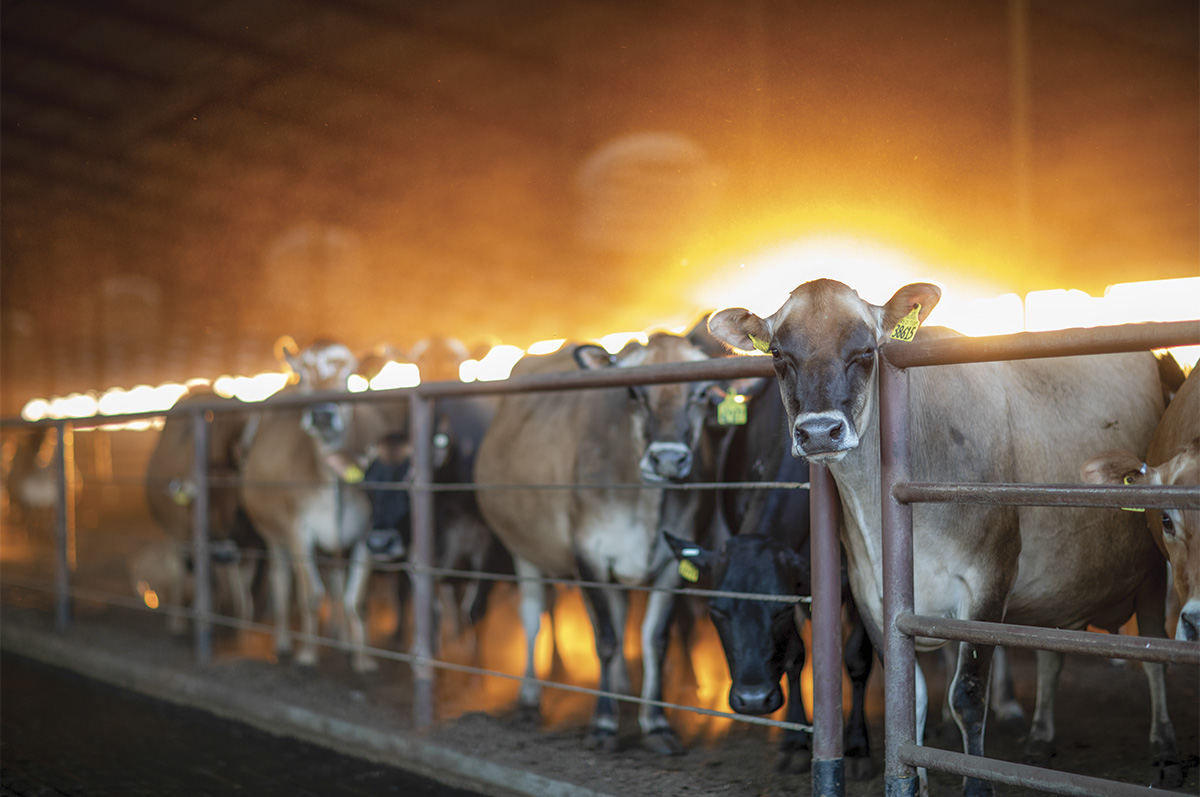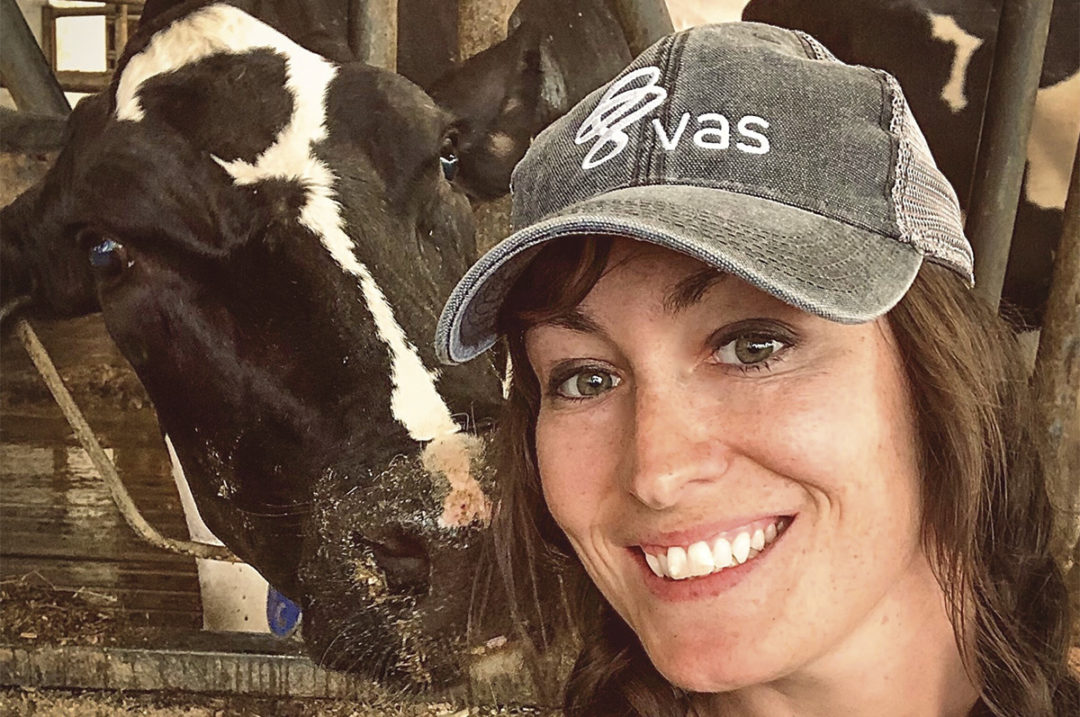The dairy industry’s “perfect cow” has changed dramatically over the past 40 years. Advancements in genetics, management practices and data collection have shaped the cow of today into a high-performing athlete, making more milk than ever with fewer resources.
“Focuses on reproduction and feed efficiency allowed for significant enhancements in the average cow, allowing her to do more with less and be more reliable in producing healthy calves year after year,” says Taliah Danzinger, senior manager of dairy intelligence at VAS.
As the cow of today has evolved, so too have herd management tools, allowing you to manage to a new level of cow performance.
“Innovations in data collection and analysis over the last 40 years have made it easier to understand what’s happening on the farm and how a cow performs,” says Danzinger. “When we know more about the cow and everything impacting her performance, we can effectively manage her to achieve more.”
Improving your herd with sustainability in mind
On average, cows today produce more milk with a higher fat percentage and lower somatic cell count (SCC) than ever before. Data from the Council on Dairy Cattle Breeding shows the national average fat percent hit 4.0% for the past two years, and the average SCC has been consistently below 200,000 for multiple years. Twenty years ago, the national average for fat was around 3.7%, and the SCC was 322,000.
“In addition to increasing production and improving milk quality, we’ve gained a deeper understanding of the impact a cow’s health events have on the dairy,” says Danzinger. “The more health events a cow has, the more resources she uses, which impacts production and overall sustainability of the business.”
Herd management software helps connect health events, production and sustainability. Software like DairyComp can show an overview of herd performance and highlight trends. With the right data management tools, you can quickly identify the health events impacting your dairy most and create solutions to tackle your challenges.

The dairy cow and herd management have evolved. Even if you use data management software, consider revisiting your workflows to find the most effective and efficient way to manage today’s cow. Photo courtesy of VAS.
“We all understand the importance of maintaining a healthy herd because a healthy cow is a profitable cow, but she is also a sustainable cow” says Danzinger. “We’ll continue to advance as an industry toward a more sustainable dairy and herd management tools will continue to play a role in telling that story.”
Finding success in reproduction
How we approach reproduction has advanced by leaps and bounds, with developments in genomic research, in-vitro fertilization and the rise in beef x dairy breeding strategies.
Technological advancements have also improved how we monitor reproductive performance. New herd management tools have allowed you to focus on pregnancy rate data, helping capture a better picture of what’s happening in the herd.
“Just a few short years ago the common goal was to reach a 30% pregnancy rate,” says Danzinger. “That was a lofty goal then, but now the 80th percentile for AgSource herds over 500 cows is over that benchmark. The unattainable is becoming the normal.”
In addition to monitoring pregnancy rates across the herd, data monitoring tools also help evaluate individual cow performance.
“Today, we can track the ideal voluntary waiting period and make educated decisions on when to breed a cow back,” says Danzinger. “We can also objectively analyze a cow's body condition through technology and review health events to determine if she’s in suitable condition to get pregnant.”
Using data to manage high-performing cows
Data management tools like CowVAL in DairyComp make it easy to compare cows within your herd and determine, based on various factors, your highest and lowest-performing cows. HealthVAL, another tool in DairyComp, provides context based on health events and allows you to compare benchmarks to similar-sized herds.

The individual cow has an immense impact on your herd. Take advantage of herd management tools to manage the cow of today and help her achieve more. Photo courtesy of VAS.
“How we manage, feed and house a genetically well-built cow changes what she can and will do,” says Danzinger. “For 40 years, we have evolved how we manage our herds – changing what we feed, how and when we milk and who we breed and cull. Dairies that take advantage of all data management tools offer can easily implement changes and push their herds further, faster.”
When using data management tools, the key is to standardize your data to the value that makes the most sense for your farm. Make your management decisions based on the data you are collecting and the current market values.
Looking 40 years ahead
How we manage the cow of today will influence what she looks like in the next 40 years. “The industry will shape today’s average cow to be more feed efficient, have fewer health events and holistically move to be above today’s average,” says Danzinger. “We’ll find new ways to manage her to optimize those genetic advancements, and technology will help us do that.
“From a data perspective, the profitable cow will continue to be a well-kept cow.”





